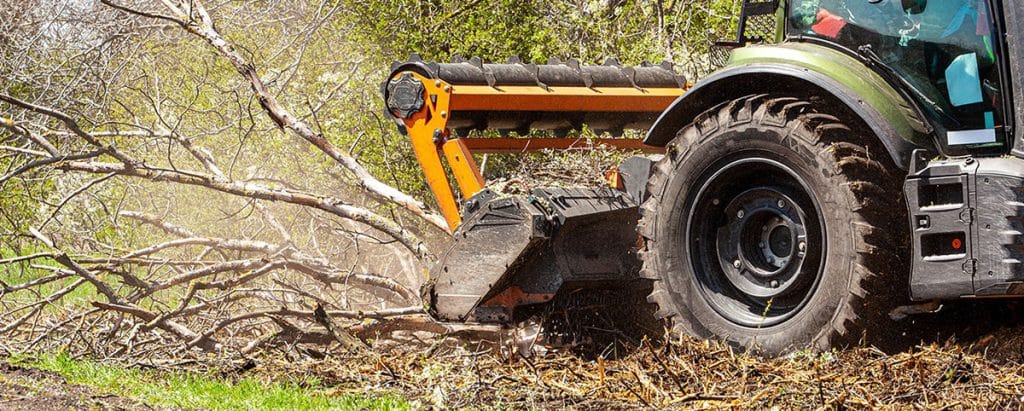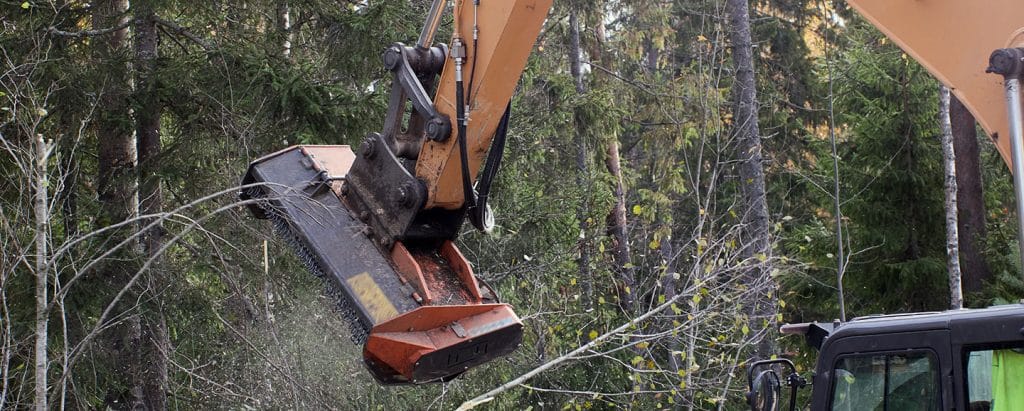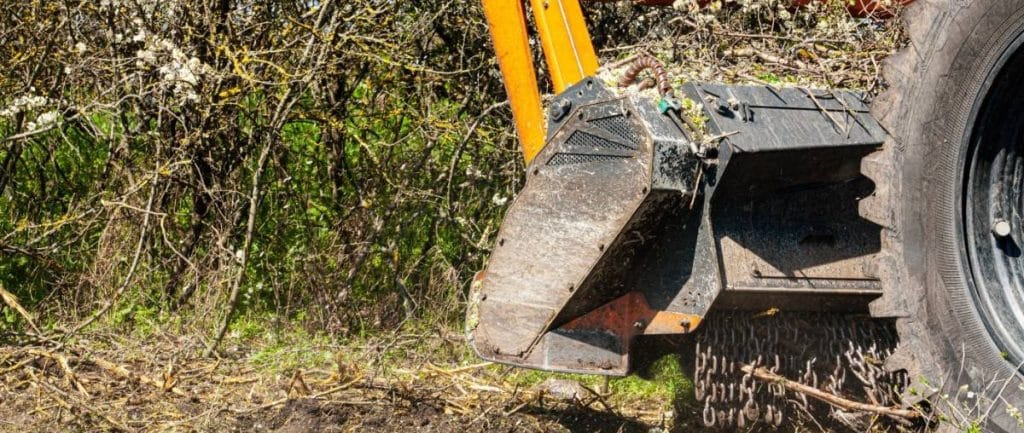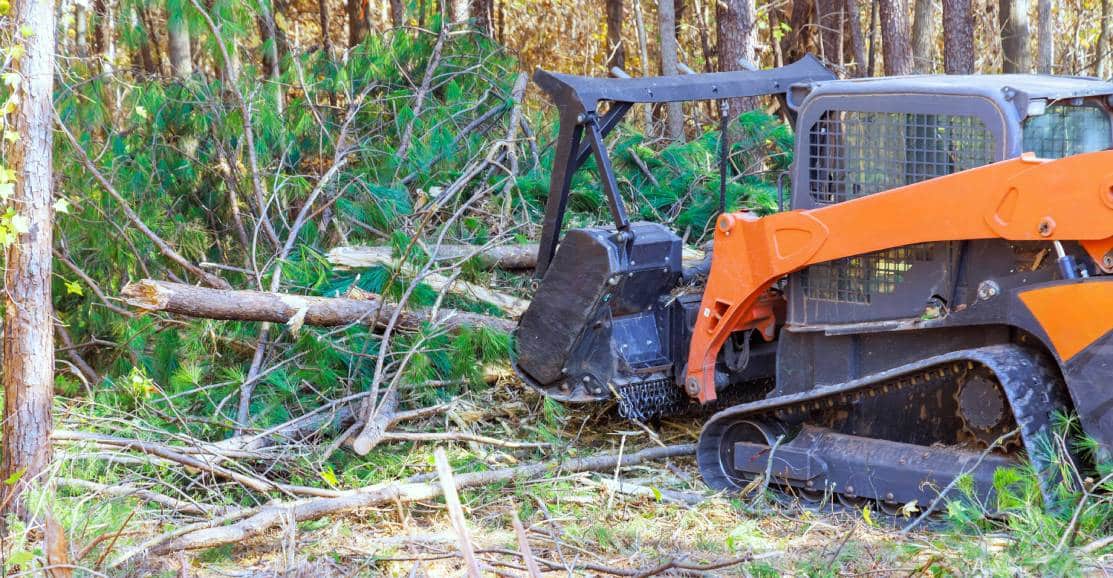You’re staring at a tangle of brush and thick timber, trying to figure out which forestry mulcher might actually tame your property. With so many options—deck, drum, disc mulchers, all riding on different carriers—it’s easy to feel overwhelmed, or worse, to make an expensive mistake that doesn’t fit your needs.
Not every mulcher is up to the challenges of your terrain, local regulations, or even the sustainability goals tied to your land management plan. And getting it wrong could mean more downtime, extra costs, or even safety risks for you and your crew.
This article will walk you through the essential factors—matching machine type to application, understanding real costs, and evaluating performance metrics—so you can move forward confidently and efficiently. Stick around for clear, practical guidance that turns mulcher selection from a headache into a smart investment in your land’s future.
Key factors in choosing the ideal forestry mulcher

Selecting the right forestry mulching equipment starts with a careful analysis of your project requirements. Consider the property’s size—small parcels may only need a compact mulcher or skid steer mulcher, while large acreage or utility corridors often require heavy-duty drum mulchers or high-capacity disc mulchers for efficient operation.
Next, identify the dominant vegetation type you’ll encounter. Dense brush, small trees, tall grass, and mature timber each demand specific mulcher strengths, with drum mulchers excelling at tough vegetation and disc mulchers favored for rapid grinding of smaller brush and saplings. If you’re after finer mulch for landscaping or soil conditioning, look for quality forestry mulchers with advanced knife or tooth technology.
Desired finish also plays a key role. Some forestry applications—like forest paths or beautification projects—may require a more even, manageable mulch, while pasture maintenance might prioritize clearing speed and volume over finish.
Assess the unique terrain and site conditions of your region. Soft, uneven ground, rocky slopes, or wetland areas ask for specialized equipment: for instance, tracked mulchers offer superior traction on difficult terrain, while attachments for excavators provide maximum flexibility on steep or cluttered forest floors. Local climate can influence machinery choice as well, as arid regions with high fire risk demand depth control mulchers and added safety features.
Compliance with local regulations is critical, especially in states like California or the Pacific Northwest where forestry operations are tightly regulated. Check requirements on emissions, noise, and permitted clearing methods—using the wrong mulcher or equipment could lead to costly fines or project shutdowns.
Finally, balance efficiency, safety, and sustainability. The right forestry mulcher isn’t just about brute force—it should be an essential tool that enables sustainable land management, meets safety standards, and eliminates destructive wildfires risks by quickly removing flammable vegetation. By aligning your mulcher selection with these key factors, you set yourself up for reliable, cost-effective performance tailored to both your land management needs and environmental responsibilities.
Types of forestry mulchers and their applications

There are several main types of forestry mulchers, each designed for different clearing tasks and vegetation densities. Deck mulchers—also called rotary brush cutters—are ideal for mowing grass, weeds, and light brush on flat ground. Disc mulchers use a spinning disc with sturdy teeth to quickly shred small trees and dense brush, making them perfect for fast land clearing in overgrown fields or along utility corridors. Drum mulchers employ a horizontal drum lined with cutting teeth, excelling at processing heavy, thick material and delivering a finer mulch suitable for landscaping and habitat restoration.
Your choice of carrier impacts both mobility and application. Skid steer mulchers offer versatility and quick attachment changes for small- to medium-sized jobs, while excavator mulchers can tackle tall vegetation and steep embankments thanks to their reach and maneuverability. Tractor-mounted mulchers and self-propelled forest mulchers are better suited for large-scale forestry operations and agricultural lands, where extended runtime and wider cutting paths are required.
When it comes to power sources, forestry mulching attachments come in hydraulic- or PTO-driven models. Hydraulic mulchers, commonly paired with skid steers and excavators, offer variable speed and control—ideal for diverse vegetation management and rough terrain. PTO-driven mulchers attach to tractors, providing a reliable option for those who already own heavy ag equipment, though these often require careful sizing to match tractor horsepower.
Here’s how each mulcher type typically fits with clearing applications:
- Deck mulchers: mowing pastures, controlling weeds in field crops, maintaining lawns.
- Disc mulchers: rapid brush clearing, reclaiming overgrown land, medium-sized trees.
- Drum mulchers: forestry maintenance, habitat restoration, creating fine mulch for landscaping.
- Excavator mulchers: brush and tree removal on slopes, clearing inaccessible forest areas.
Matching the right forestry mulcher and carrier to your specific clearing needs ensures optimal performance and long-term equipment reliability for forest management and land clearing projects of any scale.
Cutting capacity, engine power, and performance metrics
The cutting capacity of a forestry mulcher is one of the first specifications to examine when matching equipment to your project. Cutting width—how much ground or vegetation the mulcher can process in a single pass—directly influences productivity and efficiency, especially for large land clearing projects. For instance, a disc mulcher with a wider deck may process more material per hour in open areas, while a drum mulcher with a narrower profile could be better for precision work around standing trees or utility corridors.
Tooth configuration is equally critical. The type, number, and arrangement of knives or carbide teeth determine how effectively the mulcher can shred specific vegetation, from dense brush to small trees and tough stumps. Drum mulchers with a spiral tooth pattern produce finer mulch and handle continuous grinding, beneficial for forest management areas aiming for thorough vegetation control. By contrast, a disc mulcher’s aggressive teeth and rotational force excel at quickly reducing thick, woody plants to manageable mulch on rugged terrain.
Selecting a forestry mulching machine with the right engine or hydraulic power ensures optimal performance. Heavy-duty mulching applications—like duty forest clearing or processing large-diameter trees—require higher horsepower (often 70+ HP for skid steer mulchers or 150+ HP for tractor-mounted units). Undersized engines can limit cutting ability and strain machinery, increasing the risk of breakdowns.
Fuel efficiency and runtime are often overlooked but can dramatically affect operational costs. Mulchers with efficient hydraulic systems and optimized RPM ensure longer operation between refueling, which is especially important for remote forestry operations. Modern drum mulchers, for example, may feature a progressive mulching chamber design that maintains peak grinding with less energy input.
Evaluating performance metrics—such as area cleared per hour and the maximum material diameter handled—can help you estimate job completion times and select the right forestry mulching equipment for specific land management applications. For example, a quality forestry mulcher may clear up to 1.5 acres per hour in light brush but only 0.5 acres in dense timber with large branches.
Operator comfort and ergonomics also contribute to job efficiency. Features like vibration-reducing controls, excellent cab visibility, and climate-controlled operator stations reduce fatigue and support safer, more sustained work. If you’re considering different brands or models such as Fecon, Shearex, or Mongo Attachments rotary brush cutters, review how their machines address operator needs alongside raw performance specifications.
Maintenance, durability, and longevity

Routine maintenance is essential for keeping forestry mulchers—whether drum, disc, or deck models—performing reliably throughout demanding forestry work. Each type of mulcher has unique maintenance requirements. Drum mulchers generally require more frequent inspection of wear parts, such as teeth and rotor drums, due to constant high-speed grinding. Disc mulchers may need periodic checks of bearings, hydraulic lines, and torque bolts on their cutting heads.
Durability starts with build quality. Machines constructed with high-grade steel, reinforced chassis, and robust gearboxes typically withstand the rigors of land clearing operations and harsh environments better than lighter-duty models. Keep an eye on the design of wear parts: easy-to-replace knives, sectional drum assemblies, and accessible lubrication points are hallmarks of equipment intended for long service life. High-wear items like carbide-tipped teeth or heavy-duty flails on mulchers should be inspected, rotated, or replaced following the manufacturer’s guidelines—often after every 200-400 operating hours, depending on vegetation type and usage intensity.
Proactive tips for extending your forestry mulcher’s service life include:
- Thoroughly cleaning the mulcher after each use to remove built-up mulch, dirt, and residue that could cause rust or blockages.
- Following a scheduled replacement interval for knives and hydraulic filters based on your clearing tasks and the specific equipment’s recommendations.
- Monitoring hydraulic fluid levels and temperature, as overheating can rapidly degrade seals and other components.
Minimizing downtime and ensuring quick repairs depend on having a reliable local dealer and service network. Before purchasing, check if trusted brands in your area—such as Fecon, Mastodon Mulcher, or others—offer full parts inventory and trained technicians for emergency support. This can be vital during peak land management project seasons when even short equipment delays can stall progress.
Example maintenance schedules often follow a daily-weekly-monthly routine, such as:
- Daily: Inspect teeth, check oil and fluid levels, and clear debris from cooling systems.
- Weekly: Lubricate all grease points and inspect belts or tensioners.
- Monthly: Assess frame integrity, check for hydraulic leaks, and service air filters.
Regular attention to these details not only keeps forestry mulching equipment in peak operating condition but also lowers overall operating costs and maximizes return on investment. For demanding forestry operations or large-scale land management needs, building this preventive care into your workflow helps ensure your mulcher remains an essential, reliable tool for many seasons.
